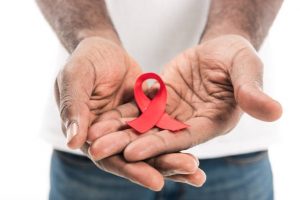11 April 2013
Experts from 80 countries cite time-limited opportunity, endorse comprehensive new eradication strategy
Prof Shabir Madhi, Executive Director of National Institute of Communicable Diseases (South Africa), joined hundreds of scientists, doctors and other experts from around the world to launch the Scientific Declaration on Polio Eradication today, declaring that an end to the paralyzing disease is achievable and endorsing a comprehensive new strategy to secure a lasting polio-free world by 2018. The declaration’s launch coincides with the 58th anniversary of the announcement of Jonas Salk’s revolutionary vaccine.
The more than 400 signatories to the declaration urged governments, international organizations and civil society to do their part to seize the historic opportunity to end polio and protect the world's most vulnerable children and future generations from this debilitating but preventable disease. The declaration calls for full funding and implementation of the Polio Eradication and Endgame Strategic Plan 2013-2018, developed by the Global Polio Eradication Initiative (GPEI). With polio cases at an all-time low and the disease remaining endemic in just three countries, the GPEI estimates that ending the disease entirely by 2018 can be achieved for a cost of approximately $5.5 billion.
“We have the tools we need and a time-limited opening to defeat polio. The GPEI plan is the comprehensive roadmap that, if followed, will get us there,” said Dr. Walter Orenstein, professor and associate director of the Emory Vaccine Center at Emory University and former director of the U.S. Centers for Disease Control and Prevention’s National Immunization Program. Dr. Orenstein is one of the scientists spearheading the declaration and among the signatories who were on the frontlines of ending smallpox, the only human disease to be successfully eradicated.
The declaration – housed online by Emory University at vaccines.emory.edu/poliodeclaration – notes that polio vaccines have already protected hundreds of millions of children from the disease and eliminated one of the three types of wild poliovirus, proving that eradication is scientifically feasible. It calls on the international community to meet the goals in the GPEI plan for delivering polio vaccines to more children at risk, particularly in Afghanistan, Nigeria and Pakistan, where polio remains endemic and emergency action plans launched over the past year have resulted in significant improvements in vaccine coverage.
“Securing a lasting polio-free world goes hand in hand with strengthening routine immunization. We need all countries to prioritize investments in routine immunization,” said Dr. Zulfiqar Bhutta, founding director of the Center of Excellence in Women and Child Health at Aga Khan University. Dr. Bhutta, one of the declaration’s leaders, is a member of the Strategic Advisory Group of Experts (SAGE) on Immunization, a technical advisory body to the GPEI.
The declaration emphasizes that achieving polio eradication requires efforts interrelated with strengthening routine immunization, a new focus of the GPEI plan. As the last cases of polio are contained, high levels of routine immunization will be critical. At the same time, resources and learning from polio eradication efforts can be used to strengthen coverage of other life-saving vaccines, including for children who have never been reached with any health interventions before.
The scientists and experts signing the declaration called on the international community to take steps outlined in the GPEI plan to address challenges that have posed obstacles to polio eradication in the past, including improving immunization campaign quality to reach missed children and eliminating rare polio cases originated by the oral polio vaccine. While previous polio efforts have sought to interrupt wild virus transmission and then address vaccine-derived virus, the new GPEI plan addresses both simultaneously with a timetable to phase out use of oral polio vaccines and introduce inactivated polio vaccines. The declaration urges vaccine manufacturers to provide an affordable supply of the different vaccines required for eradication, and calls on scientists to continue researching new and better tools.
“As long as it exists anywhere in the world, polio threatens children everywhere,” said Professor Helen Rees, executive director of the Wits Reproductive Health and HIV Institute at the University of the Witwatersrand in South Africa, who signed the declaration and chairs SAGE. “By pursuing in parallel all of the steps needed to reach eradication, including the introduction of inactivated vaccines, countries have a complete path to eliminate polio’s threat.” In November 2012, SAGE recommended the introduction of at least one dose of inactivated polio vaccine into all routine immunization programs prior to the phase-out of oral polio vaccines.
In light of recent attacks on health workers in some endemic countries, the declaration stresses the need to protect polio vaccination teams as they do their work. The GPEI plan includes a series of risk-mitigation strategies for insecure areas, including deepening engagement with community and religious leaders.
The scientists and experts signing the declaration hail from 80 countries and include Nobel laureates, vaccine and infectious disease experts, public health school deans, pediatricians and other health authorities. More than 40 leading universities and schools of public health and medicine are promoting the declaration on their websites, including Aga Khan University, the Harvard School of Public Health, the London School of Hygiene & Tropical Medicine, Al Azhar University (Egypt), University of Cape Town, Redeemer's University (Nigeria) and Christian Medical College Vellore (India).
The declaration notes that the world has a unique window of opportunity to eradicate polio. Only 223 new cases due to wild poliovirus were recorded in 2012, an historic low and a more than 99 percent decrease from the estimated 350,000 cases in 1988. Just 16 new cases have been reported so far in 2013 (as of 9 April). India, long-regarded as the most difficult place to eliminate polio, has not recorded a case in more than two years.
“Eradicating polio is no longer a question of technical or scientific feasibility. Rather, getting the most effective vaccines to children at risk requires stronger political and societal commitment,” said Dr. David Heymann, head and senior fellow at the Chatham House Centre on Global Health Security and a signatory of the declaration. “Eliminating the last one percent of polio cases is an immense challenge, as is the eradication endgame after that. But by working together we can make history and leave the legacy of a polio-free world for future generations.”
For additional information about the Scientific Declaration or to view a full list of signatories, please visit the Emory Vaccine Center Website. The Polio Eradication and Endgame Strategic Plan 2013-2018 is available online from the Global Polio Eradication Initiative. The plan will be publicly shared with the immunization community at the Global Vaccine Summit taking place 24-25 April 2013 in Abu Dhabi.




